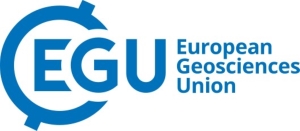The provision of open and free access to Copernicus data through a digital ecosystem is helping drive innovation in the Earth observation community, a concept that will be explored in depth at the upcoming European Geosciences Union general assembly and the first Copernicus Data Space Ecosystem User Review meeting.
The provision of open and free access to Copernicus data through a digital ecosystem is helping drive innovation in the Earth observation community, a concept that will be explored in depth at the upcoming European Geosciences Union general assembly and the first Copernicus Data Space Ecosystem User Review meeting.
The European Geosciences Union general assembly - EGU 24 - is set to bring together thousands of scientists and remote sensing experts from a broad range of disciplines, to discuss recent developments in applications of Earth Observation (EO) data in areas such as climate science, land monitoring and atmospheric science. This annual, cornerstone conference for remote sensing will take place from 15 to 19 April in Vienna, Austria.
Data plays a crucial role in driving innovation in remote sensing, so the recent revolution in EO data access - accelerated by the Copernicus Data Space Ecosystem (CDSE) - is a key topic at EGU.
The Austrian capital city of Vienna and its surroundings are pictured in this image captured on 15 October 2017, from the Copernicus Sentinel-2A satellite.
Copyright: ESA/EU
Sharing CDSE user experiences and success stories
Integral to these discussions is the first CDSE User Review meeting, which is a free hybrid event taking place on 15 April, in parallel with EGU, at a nearby venue.
The provision of open and free access to Copernicus user-level data is operated in the framework of the EU-funded CDSE. This digital ecosystem is ESA’s pivotal initiative to revolutionise EO data access across various sectors, benefiting users by providing tools for the discovery and visualisation of vast amounts of data, as well as a set of data processing tools.
The first CDSE User Review meeting is an opportunity to take a retrospective and future facing look at the ecosystem, with analysis of user feedback and sharing of user experiences and success stories. There will also be interactive sessions to exchange new suggestions, with around the table discussions to define forthcoming CDSE developments.
Following the user review meeting, in person attendees registered for EGU will have the opportunity to attend further informal presentations about CDSE at ESA’s booth. Topics will include data processing workflows in CDSE Jupyter Notebooks, how to use the Copernicus Browser, and a general overview of this new ecosystem and how to access it.
As part of its contributions to EGU, on Friday 19 April, the CDSE team is co-convening and participating in several disciplinary sessions under the umbrella “Open Data Spaces & Copernicus satellite data Infrastructures”.
The European Geosciences Union symposium takes place 15 to 19 April in Vienna.
Copyright: EGU
Revolution in EO data access drives innovation
The headline presentation will focus on the impact of CDSE, highlighting how the ecosystem acts beyond its function as a data repository, operating as a collaborative platform where knowledge, expertise, and resources are shared and enhanced. The role of CDSE and open data spaces in fostering creativity in EO research, will also be in the spotlight.
Beyond CDSE, there are various European efforts to provide access to high quality, interoperable data through streamlined, digital ecosystems and state-of-the-art tools. Additional thematic or geographical data spaces are being developed, such as the European the Green Deal Data Space and other sectorial data spaces.
Interoperability between data spaces
There will be multiple oral and poster sessions to connect developers and users of CDSE with other European satellite data infrastructures and data spaces, and show how data spaces enable the sharing, integration, and flexible processing of remote sensing data.
One presentation, will outline key data management principles that support the EC’s European strategy for data, which prepare for interoperability between these numerous thematic and domain-specific data spaces.
Thanks to recent advances in computing power and improvements in satellite revisit times, there are vastly more data available than a decade ago.
The Copernicus Data Space Ecosystem Dashboard offers up-to-date insights into the scale of data that can be accessed and retrieved instantly from the CDSE. For example, in a snapshot of December 2023, the dashboard showed that more than 100 000 users registered at the platform could access more than 65 PB of satellite data from the ecosystem using various services.
Snapshot of the Copernicus browser.
Copyright: ESA
Given this huge scale, processing imagery on desktops or laptops is no longer an effective approach, according to one EGU session that extols the benefits of switching EO data processing and analysis to the cloud.
EGU24 and the first CDSE User Review meeting will be a prime occasion for the remote sensing community to gain insight into the CDSE, various existing initiatives on data sharing and processing, and the cutting-edge tools available within the ecosystem. Altogether, these recent advances are transformative for geoscience research.
